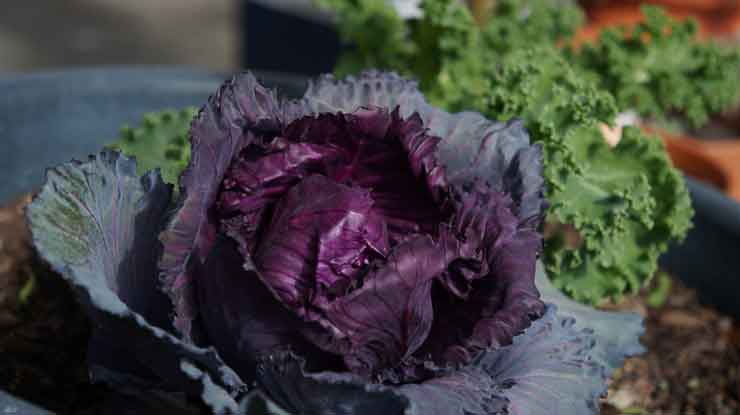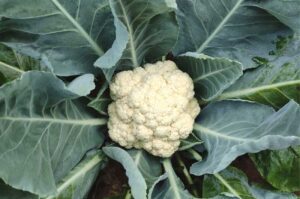Why are my cabbage leaves turning purple?
Cabbage is an important cool weather crop belonging to the Brassicaceae family. I just love to grow cabbages in my garden, every year, during the winter.
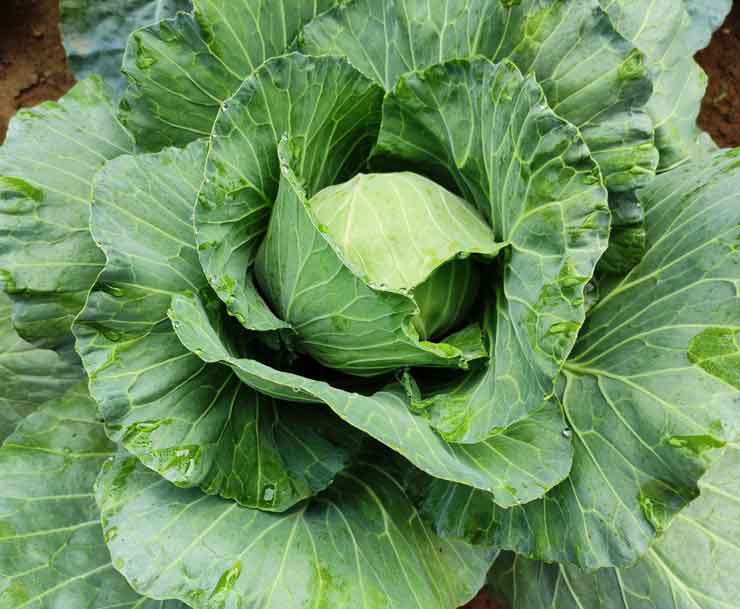
For beginners, it is a little bit trickier part to grow cabbages, because sometimes these plants, show some weird symptoms or signs of physiological disorder or stress. Like in some cases the head will not form, or cracked head will form, or the leaves will show some weird color transformation, etc.
A similar problem is shown among many cabbage growers is that the leaves of their plant will gradually turn to purple. During the initial stage, only some portion of the leaf will turn purple, and gradually the entire foliage will turn purple.
This is a major problem among the growers, and this article will cover all aspects of the topic, and try to give you a satisfactory answer.
Why are my cabbage leaves turning purple?
There are many reasons for which cabbage leaves can turn purple. The major reason for this is nutrient deficiency. Either lack of nutrients like phosphorous, magnesium in the soil, or the inability of the plant to extract these nutrients from the soil, due to various reasons is the probable cause for the leaves turning purple.
Here is a detailed explanation about why the cabbage leaves turn purple?
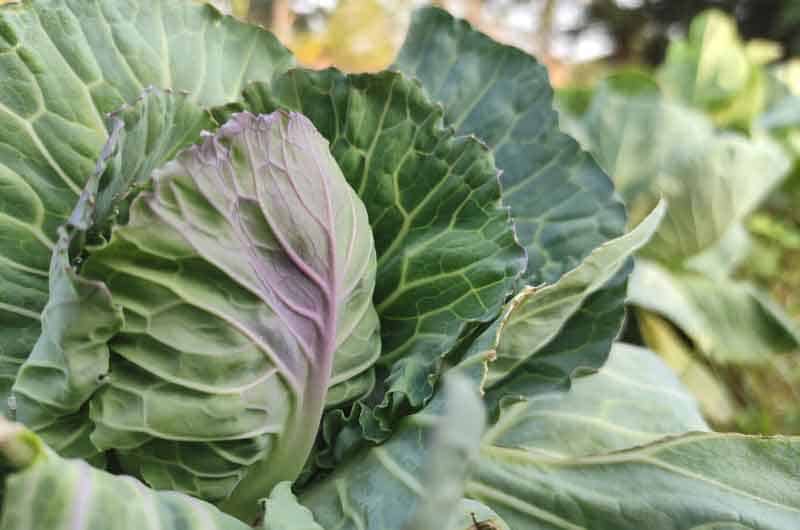
Nutrient deficiency
Nutrients play a major role in the normal functioning of a plant. But their deficiency is expressed by the plants by showing different symptoms.
In most plants, the phosphorous deficiency is expressed by the reddish-purple leaves. If the leaves of your plant are turning to purple, means that the plant is not getting enough of the nutrient that the plant actually needs.
This may be either due to low phosphorous content in the soil, or the plant is unable to uptake the phosphorous from the soil.
If the phosphorous content in the soil is low, then this issue can be corrected by adding phosphorous to the soil, in form of fertilizers. And if the plant is unable to uptake its required nutrients, then this issue has to be revolved by taking necessary action.
Low nutrient content in the soil
Phosphorous is a mobile plant nutrient. It can be easily lost from the soil through leaching with runoff water. Therefore, it is recommended to add this fertilizer in every crop season.
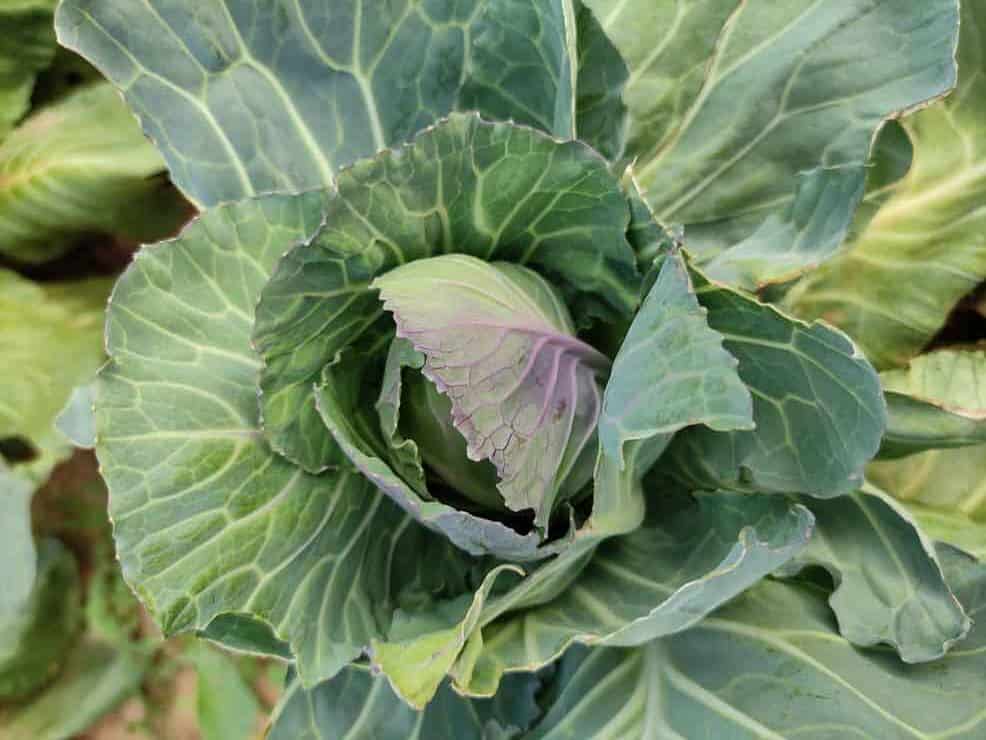
If your cabbage leaves are turning purple, the first thing you have to do is to test your soil. The report will clearly explain whether the phosphorous content in your soil is really poor, or some other issues are there.
If it is found that the soil has really less phosphorous content, then you can add some phosphatic fertilizers to enrich the soil with this major nutrient.
Also some time due to magnesium deficiency, some plants show reddish-purple leaves. By analyzing the soil test report, the magnesium content in the soil can also be cross-checked.
You would love to read our article about why cauliflower leaves are turning yellow.
Temperature
Although the cabbage is a cool-season crop that requires a low temperature during its growth period, extremely low temperatures hamper the plant growth. The extremely cold soil prevents the uptake of nutrients by the roots.
A major portion of the plant nutrients are uptaken by mass flow, where the nutrients along with water are uptaken by the root, then supplied to the leaves through the xylem tissue.
But at extremely low temperatures, when the water inside the soil freezes, it will stop the movement of water and nutrients through the mass flow. As a result, the nutrients will be unavailable for the plants, even if they are present in sufficient quantity in the soil.
This in turn change the leaf color to purple.
When the temperature comes to the ideal range i.e. 40 to 80 degrees Fahrenheit, then the purple color revert back to green.
Soil pH
Soil pH is an important indicator for determining the acidity and alkalinity of the soil. If the soil is too acidic, or too much alkali, then it is bad for the plant. The plant will respond to extreme pH by turning purple.
Cabbage plants love to grow in neutral pH. The ideal pH range is between 6.0 to 7.5, which is nearly neutral. Extreme soil pH hampers the nutrient uptake process.
You have to check the soil pH using a pH-testing kit, which is easily available in the nursery stores, or nearby garden centers. If the soil pH is too high, or too low, then go for respective solutions.
You can also add organic matter to the soil. This will improve the physical condition of the soil and also act as a buffer. It will reduce the soil pH, if it is too high, or increase the pH if it is low.
Final thoughts
So now we can conclude that the main reason for the cabbage turning their leaves purple is nutrient deficiency. Mainly phosphorous. Either there might be a low phosphorous concentration in the soil, or the plant is unable to uptake phosphorous due to various factors.
Whichever is the case, the most important thing is that you have to first test your soil, and check the nutrient status of your soil. If it too low, then apply nutrients in the form of fertilizers. If the nutrient is there, but the plant is unable to uptake the nutrient, then find the necessary corrective measures.
Also, make sure that you are growing a green variety of cabbage. Because there are also red cabbage varieties, which form a reddish-purple head. So before planting, make sure you have chosen the right one.
